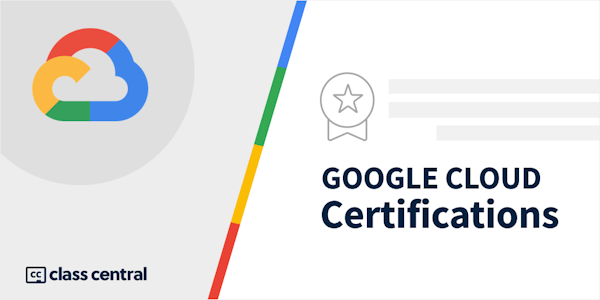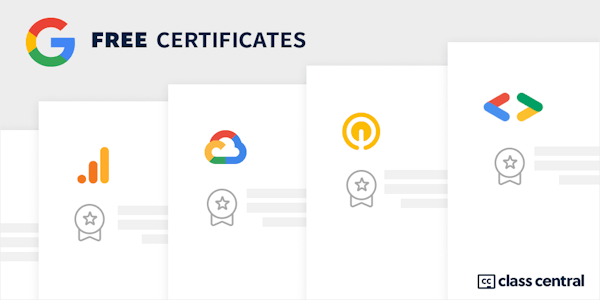Migrating to Google Cloud
Google Cloud and Google via Coursera
-
583
-
- Write review
This course may be unavailable.
Overview
Class Central Tips
This course introduces participants to the strategies to migrate from a source environment to Google Cloud. Participants are introduced to Google Cloud's fundamental concepts and more in depth topics, like creating virtual machines, configuring networks and managing access and identities. The course then covers the installation and migration process of Migrate for Compute Engine, including special features like test clones and wave migrations.
Syllabus
- Introduction
- This module introduces you to learning objectives of the course.
- Introduction to Cloud Migration
- In this module, you will learn about cloud computing characteristics, the difference between running your workloads on-premises vs running them in the cloud, reasons to move the cloud, and the common migration strategies to the Cloud.
- Assessing the Source Environment
- In this module, you will learn how to discover and analyze your source environment via an assessment automation tool. The tool will assist you in identifying virtual machines to migrate to the cloud, predict the total cost of ownership of running Virtual Machines in the Cloud, as well as optimize your Cloud bill by providing Virtual Machine recommendations based on their actual utilization.
- Google Cloud Fundamentals
- In this module, we will compare the terminology that you are familiar with on-premises or in AWS to the corresponding terminology on Google Cloud, explain how resource hierarchy works in Google Cloud’s environment, and discover ways to control permissions with IAM. You will also learn how to limit consumption with quotas and budgets, predict cost and visualize spend over time.
- Virtual Machines and Networks in the Cloud
- In this module, you will learn how to create a Virtual Private Cloud, your network hosted on Google Cloud’s infrastructure. You will also learn how to control access to your network with firewall rules and how to create subnets. You will then learn how to create and manage Virtual Machines in Compute Engine, choose the right configuration, and understand Compute Engine’s pricing model. Lastly, you will learn how to create a connection between your source environment and your Virtual Private Cloud.
- Migrate for Compute Engine
- In this module, you will learn about Migrate for Compute Engine architecture, how to install it in your source environment, the migration process, and special features like running a test clone. Lastly, you will learn how to use migration waves to migrate a large number of machines at once.
- Governance
- In this module, you will learn how to create and manage user identities in the cloud using Cloud Identity. You will also learn how to sync your current users and groups from your on-premises environment to the cloud using an automation tool. In addition, you will learn best practices on how to structure your resource hierarchy as your cloud footprint grows in size. You will then learn how to centrally manage a single network across multiple projects, known as Shared VPC. Lastly, you will learn how to manage an identity provider across environments.
- Logging, monitoring and next steps
- In this module, you will learn how to use Cloud Monitoring and Cloud Logging capabilities to enhance your observability of your cloud environment. You then learn how to use managed instance groups, which are automated groups of virtual machines that can scale up and down based on metrics. You will also learn how to use our global load balancer to frontend the group of virtual machines, and lastly, you will learn about our Cloud Support tiers.
Taught by
Google Cloud Training





